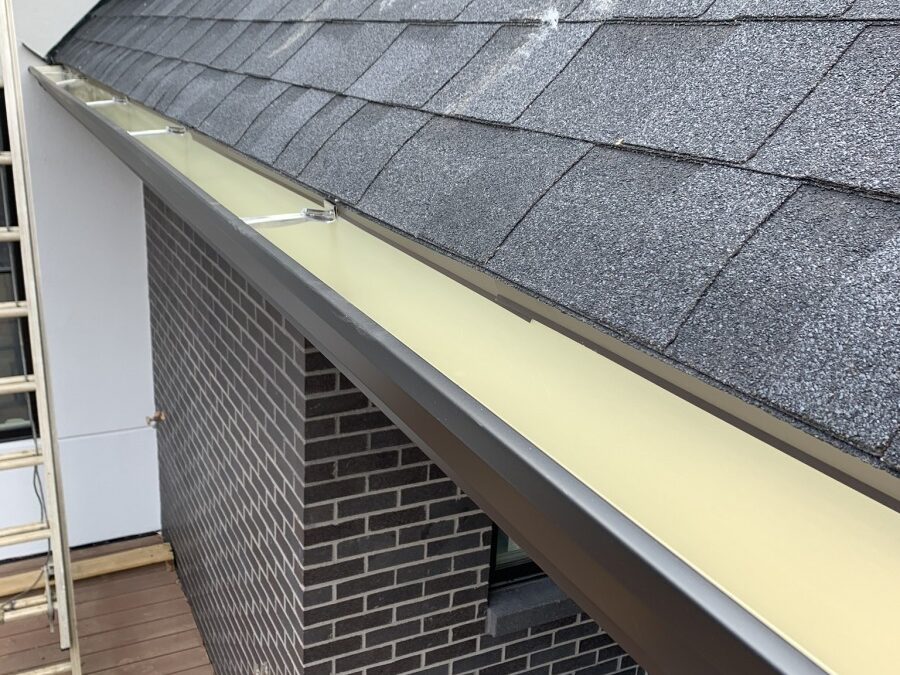Gutters play a crucial role in protecting your home from water damage, and one often overlooked component is the gutter drip edge. In this blog post, we at Tiger Gutters in Memphis, TN, will explore what a gutter drip edge is, why it’s important, and how it functions to safeguard your home. Whether you’re a homeowner looking to understand more about your gutter system or considering an upgrade, this post will provide valuable insights into the world of gutter drip edges.
What is a Gutter Drip Edge?
A gutter drip edge is a metal flashing installed at the edges of your roof. Its primary function is to direct water away from the fascia and into the gutters. By doing this, it helps prevent water from seeping into the roofing structure, which can cause rot, mold, and other forms of water damage. The drip edge ensures that water flows directly into the gutter system, thereby enhancing its efficiency and prolonging the lifespan of your roof and gutter system.
Importance of a Gutter Drip Edge
Protection Against Water Damage
One of the main benefits of a gutter drip edge is its ability to protect the underlying structures of your roof from water damage. Without a drip edge, water can run down the roof and behind the gutters, leading to potential damage to the fascia, soffit, and even the interior of your home. By directing water into the gutters, the drip edge helps maintain the integrity of your roof and prevents costly repairs.
Preventing Pest Infestation
A properly installed gutter drip edge can also act as a barrier against pests. Without a drip edge, small animals, birds, and insects can find their way into the gaps between the roof and the fascia. This can lead to infestations and further damage to your home’s structure. The drip edge seals these gaps, making it more difficult for pests to enter.
Enhancing Gutter Performance
By ensuring that water flows directly into the gutters, a drip edge enhances the overall performance of your gutter system. It helps in managing water runoff more efficiently, especially during heavy rainfall. This can prevent overflowing gutters, which can cause water to pool around your home’s foundation, leading to potential basement flooding and structural damage.
Types of Gutter Drip Edges
Gutter drip edges come in various materials and styles, each with its unique benefits. Here are some common types:
Aluminum Drip Edge
Aluminum is a popular choice due to its lightweight nature and resistance to rust. It is easy to install and comes in various colors to match your home’s exterior. Aluminum drip edges are also cost-effective, making them a preferred option for many homeowners.
Galvanized Steel Drip Edge
Galvanized steel drip edges are known for their durability and strength. They are coated with a layer of zinc, which helps prevent rust and corrosion. This type of drip edge is ideal for homes in areas with harsh weather conditions, as it can withstand heavy rainfall and strong winds.
Copper Drip Edge
Copper drip edges are the most durable and aesthetically pleasing option. Over time, copper develops a patina, giving it a unique and attractive appearance. While copper is more expensive than other materials, its longevity and visual appeal make it a worthwhile investment for many homeowners.
Vinyl Drip Edge
Vinyl drip edges are a budget-friendly option and are easy to install. However, they are not as durable as metal drip edges and may not withstand extreme weather conditions as effectively. Vinyl is suitable for homeowners looking for a temporary or low-cost solution.
Installation Process of Gutter Drip Edges
While the installation of a gutter drip edge might seem straightforward, it is best left to professionals to ensure it is done correctly. Here is a general overview of the installation process:
Step 1: Prepare the Roof Edge
The first step involves preparing the roof edge by cleaning it and removing any debris. This ensures that the drip edge can be installed securely.
Step 2: Cutting the Drip Edge
The drip edge is then cut to the required length, making sure it fits snugly along the roof edge. It is important to make precise cuts to avoid gaps or overlaps.
Step 3: Positioning the Drip Edge
The drip edge is positioned along the roof edge, with the wider edge overhanging the roof and the narrower edge extending into the gutter. This ensures that water flows directly into the gutter system.
Step 4: Securing the Drip Edge
The drip edge is secured in place using roofing nails or screws. It is important to ensure that the drip edge is flush against the roof and gutter to prevent any gaps where water can seep through.
Step 5: Sealing the Edges
Finally, the edges are sealed using roofing cement or caulk to provide an additional layer of protection against water infiltration.
Maintenance Tips for Gutter Drip Edges
To ensure your gutter drip edge remains effective, regular maintenance is essential. Here are some tips to keep in mind:
Regular Inspections
Inspect the drip edge periodically to check for any signs of damage or wear. Look for rust, cracks, or any gaps between the drip edge and the roof.
Cleaning Debris
Keep the roof edge and gutters free from debris. Leaves, twigs, and other debris can accumulate and obstruct the flow of water, reducing the effectiveness of the drip edge.
Addressing Damage Promptly
If you notice any damage to the drip edge, address it promptly. Small issues can quickly escalate into major problems if left unattended.
Conclusion
Understanding the role and importance of a gutter drip edge is crucial for maintaining the health and longevity of your home’s roof and gutter system. By directing water away from vulnerable areas, a drip edge helps prevent water damage, pest infestations, and enhances the overall performance of your gutters. At Tiger Gutters in Memphis, TN, we believe that an informed homeowner is a prepared homeowner. Regular inspections and maintenance can go a long way in ensuring your gutter drip edge continues to protect your home effectively.
Whether you are considering installing a new drip edge or simply want to understand more about your existing gutter system, this knowledge will empower you to make informed decisions for the betterment of your home.

